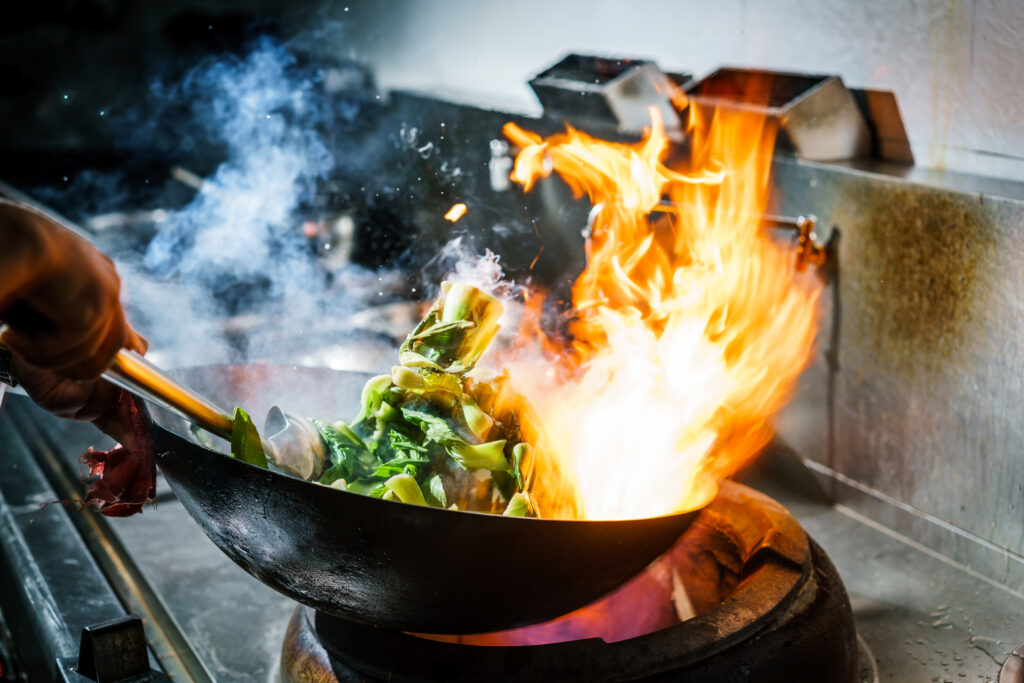The first step in mitigating restaurant fire risk is understanding how often it occurs and its causes. The National Fire Protection Association keeps detailed statistics on structure fires in eating and drinking establishments. The data goes a long way in informing restaurant operators where to put their attention to prevent the catastrophic losses that can occur from a restaurant fire.
Understanding fire codes & standards and complying is critical to mitigating restaurant fire risks. After getting a clear picture of the real dangers, restaurants need to take a proactive fire prevention approach. This will include preventative maintenance, staff training, a fire safety plan, and carrying the appropriate fire insurance designed for restaurants.
Restaurant fire safety preventative maintenance
Being prepared is the best line of defense when it comes to restaurant fire safety. The best preparation comes in the form of staying on top of fire prevention system maintenance. If the time comes, make sure prevention systems are fully operational and ready to perform as designed.
Automatic fire-suppression system
Because 57% of restaurant fires start in the kitchen, having a ready-to-go automatic fire-suppression system is highly recommended. The systems automatically dispense chemicals to suppress flames and can be manually controlled. When the system is activated, the fuel or electric supply to cooking equipment is shut off automatically. Restaurants should have fire-suppression systems professionally inspected every six months.
Fire extinguishers
Restaurants need Class K fire extinguishers designed for kitchen fires involving grease, fats, and oils that burn at high temperatures. Class K should only be used after the activation of a built-in hood suppression system. Class ABC extinguishers should be available for all other types of fires that may occur.
Exhaust system maintenance
The NFPA Fire Code calls for quarterly inspections of systems in high-volume operations and semiannual inspections in moderate-volume restaurants. Monthly inspections are required for exhaust systems serving solid-fuel cooking equipment like wood and charcoal-fed ovens.
Electrical equipment maintenance
Restaurants need to schedule regular maintenance on electrical equipment and watch out for hazards like frayed cords and cracked or broken switch plates near power sources.
Staff training
Having a well-trained and vigilant staff is essential for restaurant fire safety. Restaurant staff should be trained in the following areas:
Fire extinguisher use — All staff members should be able to use a fire extinguisher properly. A helpful acronym that’s helpful is PAST (pull out the pin, aim at the base, make a sweeping motion, be ten feet away)
Grease Best Practices — Staff should be trained and scheduled to clean exhaust hoods frequently as grease buildup will restrict airflow. Regularly degrease walls, work surfaces, ranges, fryer, broilers, and grills. Never throw water on a grease fire.
Ash Control — Ashes from wood and charcoal burning ovens should be removed daily. They need to be stored outdoors in a metal container at least 10 feet from any building or combustible materials.
Flammable Liquid Storage — Keep all flammable liquids in their original containers or puncture-resistant tightly sealed containers. Store containers in well-ventilated areas away from supplies, food, food preparation areas, or any flame source.
Fire emergency plan
Even when restaurants prepare, the unexpected can happen. If a fire breaks out, staff should be prepared to control the situation and lead customers to safety.
Power controls
At least one on duty employee should have the job of shutting off gas and electrical power in an emergency.
Evacuation plan
One staff member on each shift should be the designated evacuation manager. That individual should be tasked with calling 911, determining when an evacuation is necessary, and ensuring that everyone safely exits the restaurant. All staff members should know where the closest exits are located wherever they are stationed within the establishment.
Emergency training
All new employees should be trained on evacuation procedures, trained on fire-safety equipment, and educated on restaurant fire prevention practices. Veteran staff members should have a refresher course at least once per year.
Restaurant fire insurance
Insurance should be a part of every restaurant’s fire safety plan. A small percentage of restaurant fires are arson, and when stress is high, even properly trained staff can make mistakes.
McGowan’s Restaurant Insurance provides an extra layer of protection that restaurants need to ensure they’re always protected.



